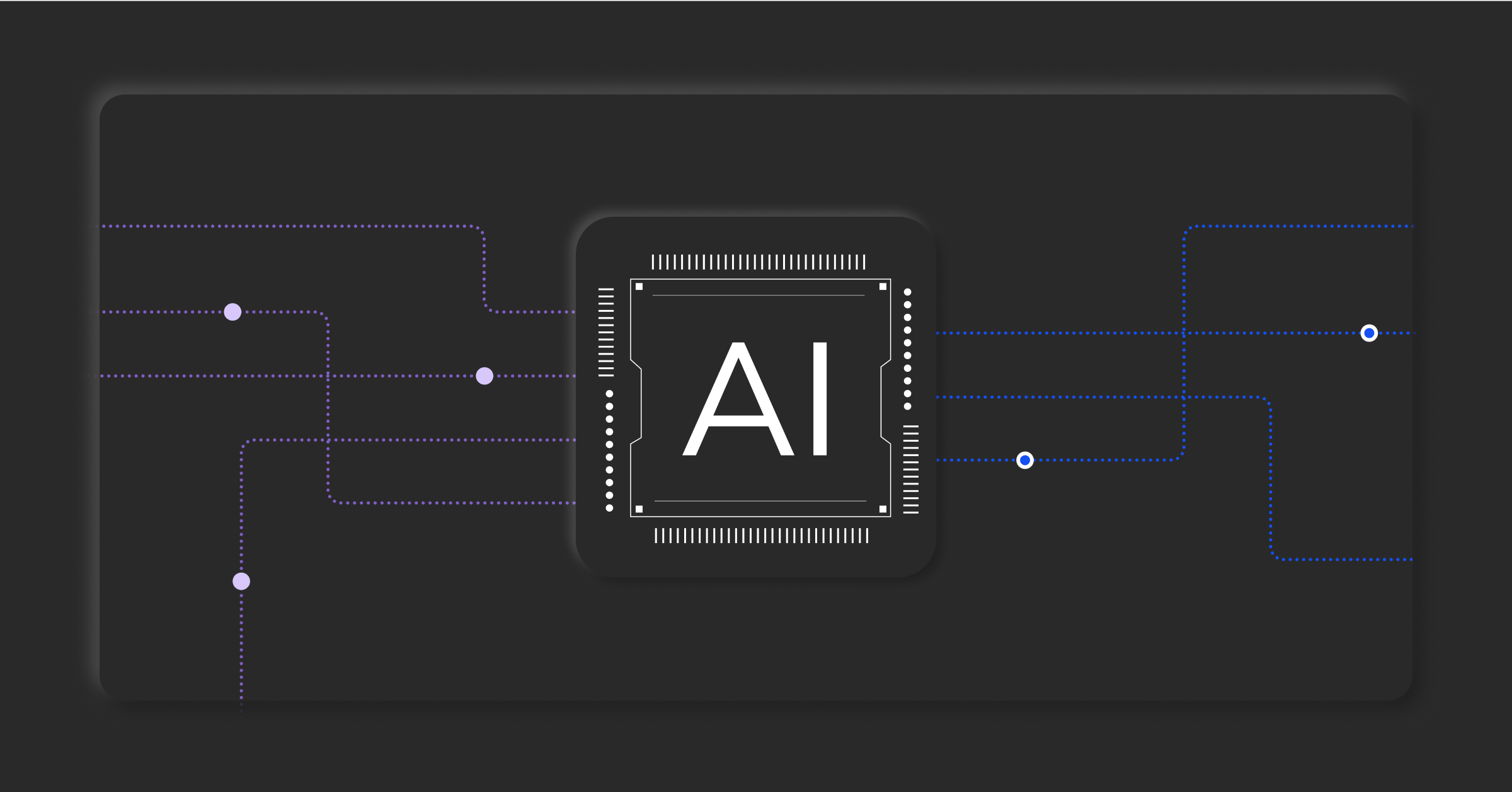How AIOps improves response times in the NOC

The sheer volume of data and the need for fast, accurate troubleshooting can overwhelm even the most experienced network operations center (NOC) teams. Stress levels increase when response times lag — as do costs, customer frustration, and risks to revenue.
AIOps can help. Deploy AIOps to automate data analysis and correlate alerts in real time, filter alerts to reduce noise, and pinpoint incident root cause faster than traditional methods. Alignment with NOC teams helps resolve incidents quickly, efficiently, and with fewer manual steps.
Three risks of slow response in the NOC
- Every minute of unplanned IT downtime costs organizations an average of $14,056. That figure rises to $23,750 for large enterprises. Quick math: That’s more than $1.4 million per hour.
- Slow response times can also violate service-level agreements (SLA), resulting in penalties and strained client relationships.
- Unreliable services affect user experience, which can cause higher customer churn and reputation damage. Internally, delays create operational bottlenecks.
Barriers to quick response in the NOC
NOC teams are responsible for maintaining network stability and reliability by identifying and resolving issues quickly to minimize impact on IT operations and uptime. Several factors can influence response time, including:
- Noise vs. actionable alerts: NOCs often deal with a flood of alerts, many of which are false positives or low-priority notifications. Sorting through the noise to find critical alerts takes time and can delay response. Consistently high alert volume often results in alert fatigue: Over time, teams become desensitized, which makes it easier to miss critical incidents, ultimately delaying remediation.
- Infrastructure complexity: Modern networks are often hybrid environments that combine cloud infrastructure, on-premises hardware, and third-party tools. Tracing an incident’s root cause across this interconnected structure can slow response, particularly when multiple teams are involved.
- Silos and fragmentation: NOC teams rely on various monitoring and troubleshooting platforms. However, these tools often lack integration, forcing teams to toggle between different dashboards and piece information together. Manual effort increases the risk of human error, further delaying resolution.
- Manual processes: Outdated processes that require teams to manually sift through logs, correlate data, or escalate issues create bottlenecks.
- Communications: Each layer of communication adds delays. For example, internal barriers and approval chains can slow escalations to higher-level teams or vendor support. The longer it takes for critical issues to reach the right people, the longer identification and resolution take.
Case study: Cambia Health Solutions
Cambia used BigPanda to consolidate and prioritize alerts, reducing overall alert volume and enabling quicker, more targeted responses to critical incidents. Cambia’s newfound visibility through the reduction of alert noise and enhanced alert enrichment strategies allowed the NOC to automate processes. The NOC can now identify critical alerts within 30 seconds and meet 95% of NOC SLAs.
“BigPanda has helped significantly with deduplicating, correlating, and automating our process. We have a better understanding of what is impacted throughout the organization and how to fix it quickly. This has been huge because it has given time and resources back to the NOC,” said Mark Peterson, supervisor of IT operations for Cambia. “The enrichment data that we process through BigPanda is allowing us to create more specific and insightful alert tags, which is helping us reduce the need for tribal knowledge. We get better context responses to alerts that are coming in and get the right teams involved for a far faster resolution time.”
Learn more in the full Cambia Health Solutions case study.
AIOps features that enhance NOC response times
Response times can make or break operations when managing a NOC. AIOps offers features that streamline workflows and significantly reduce anomaly detection, prioritization, and incident resolution time.
Automated incident triage and prioritization
AIOps makes manually sorting incidents a task of the past. Automated incident triage prioritizes based on severity and potential impact on the network. Instead of responders trying to figure out what to do, the system automatically presents the most critical problems first.
Intelligent alert enrichment, correlation, and noise reduction
AIOps platforms like BigPanda help reduce noise in NOC workflows by enriching and correlating alerts from multiple sources. Alert Intelligence filters out non-essential notifications so teams can zero in on the issues that need immediate attention.
Automated ticket categorization and routing
AIOps automates ticketing workflows, correctly categorizing each incident instantly and routing it to the right team. This eliminates the back-and-forth delays of manual routing and significantly speeds up response. By sending issues directly to the correct owner, AIOps helps NOCs respond faster and prioritize problem-solving over administrative tasks.
AI-powered root-cause analysis
Leveraging AI speeds up root-cause analysis to pinpoint the exact source of an issue. Instead of spending hours (or even days) sifting through logs to trace the cause manually, generative AI provides straightforward, actionable insights in natural language in minutes. Reducing the overall troubleshooting time enables your team to focus on quick, effective resolution of the root cause.
Predictive maintenance and proactive issue detection
By analyzing historical data and detecting patterns, AIOps platforms can identify potential problems so teams can take appropriate preventive action. This proactive approach reduces the likelihood of major incidents and downtime, providing greater network stability.
“Prior to BigPanda, we were generating hundreds of thousands of data points and events. We had no processing layer in between events and our NOC, and without contextualization, root cause investigation was very long, manual, and difficult.”
Jon Moss
Head of Edge Software Engineering, Zayo
Benefits of AIOps in NOCs
AIOps specifically addresses critical operational challenges by automating and optimizing workflows.
Significant incident detection
AIOps is on duty 24×7. It identifies anomalies and flags them instantly, so you’re notified of potential issues before they spiral out of control. Consequently, the time between an issue occurring and alerting your team — a.k.a. mean time to detect (MTTD) — is faster.
Faster mean time to resolution (MTTR)
Automation streamlines tasks like triage, prioritization, and ticket routing. Your team isn’t slowed down by manual processes or chasing low-priority alerts. AI-powered root-cause analysis provides real-time insights to support faster fixes and reduce MTTR.
More accurate problem diagnosis
Identifying network issues is often a guessing game, especially in complex environments. AIOps correlates data from multiple sources and uses AI to pinpoint incident root causes accurately, which provides better context to help avoid ITSM and NOC surprises. Instead of spending time on trial and error, your team receives clear insights that lead directly to the problem.
Better resource allocation and productivity
Automating repetitive tasks like alert filtering and ticket categorization frees engineers to focus on critical incidents. It also ensures the right people are assigned to handle problems, which saves people time trying to solve tasks outside their skill set.
More proactive incident management
With predictive analytics, AIOps identifies patterns and potential issues before they become full-blown incidents. Teams get a head start on minimizing downtime and improving overall network stability. Instead of a constant state of firefighting, AIOps helps teams stay ahead.
“BigPanda is bringing work-life balance to the entire organization. Everyone strives for that, but this has really helped us to achieve that. We see fewer outages because our NOC can now truly get ahead of them.”
Priscilliano Flores
Sony Interactive Entertainment
Best practices for implementing AIOps in NOCs
When implementing AIOps in your NOC, the goal is to enhance your workflows. Understanding the strengths and weaknesses of your current setup will help you tailor AIOps solutions to solve specific challenges.
Assess current NOC capabilities and pain points
Start by evaluating where your NOC stands today. Are you overwhelmed by alert noise? What are the biggest bottlenecks in the current setup? Are manual processes slowing response? Details like these can inform where AIOps can have the most benefit.
Select appropriate AI technologies and tools
Align tools to your needs. It’s about finding the right fit, not just picking the most popular option. Do you need more automated incident triage? Or are you losing the most time handling root-cause analysis? Make you choose tools that can scale with your operations and integrate well with your existing tech stack.
Integrate with existing NOC tools and processes
AIOps should complement your current setup, not replace it. Take stock of the tools already in your NOC and choose an AIOps platform that seamlessly integrates with your monitoring, observability, ticketing systems, or communication platforms.
Implement in phases
Don’t try to overhaul everything at once. Start your AIOps rollout where it will deliver quick time to value, like alert noise reduction or automated ticket routing. A phased approach allows you to test, refine, and scale gradually, ensuring the implementation doesn’t overwhelm your team. It also provides early success stories to help build momentum and buy-in across the organization.
Train and upskill teams
AIOps is only as effective as the people using it. Thoroughly train your NOC to be comfortable with the new tools and processes. This might involve upskilling team members on AI concepts, automation workflows, or data analysis. Continuous training allows your team to adopt AIOps and leverage it to its full potential, gaining the most value from your investment.
Improve NOC response times with BigPanda
BigPanda AIOps provides a transformative approach to improving efficiency and incident response times within your NOC and IT environment. The platform applies GenAI to incident management to prioritize critical IT issues and automate the resolution process so your team can focus on innovation instead of repair.
The BigPanda incident console consolidates data from multiple monitoring tools to provide a unified view of incidents, enabling faster problem detection and resolution. Automated ticketing and routing reduce manual tasks. Additionally, by automating routine processes and leveraging machine learning for root-cause analysis, BigPanda decreases MTTR by up to 50%. This boosts service availability and allows your NOC to operate more proactively.
If you’re ready to take your NOC to the next level, learn more about BigPanda AIOps.



